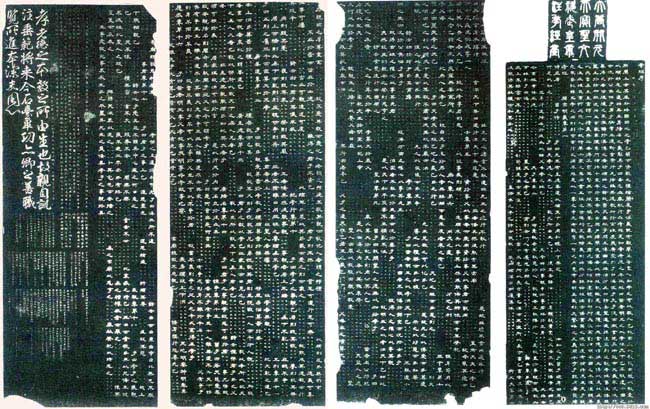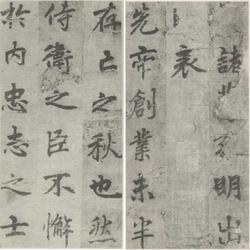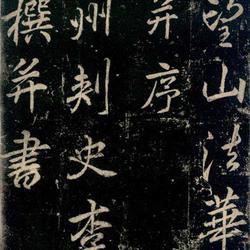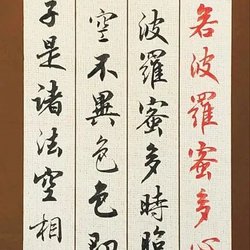

"Shitai Xiao Jing" was established in the fourth year of Tang Tianbao (745 AD). This stele consists of four pieces, each 590 centimeters high and 120 centimeters wide. Li Longji, Emperor Xuanzong of the Tang Dynasty, personally wrote the preface, annotations and scripts, and Li Heng sealed the forehead. It is now located in the Xiaojing Pavilion of the Forest of Steles Museum in Xi'an, Shaanxi Province. The inscriptions and official scripts follow the customs of the Han Dynasty but slightly change the method. They are plump and crisp, and have the style of the prosperous Tang Dynasty. The stele is solid and thin, and it is still as bright as lacquer.
"The Classic of Filial Piety" is a record of the questions and answers he had with Confucius, which was written by a student of Confucius. The main content is about the two words "filial piety" and "fraternity". The stele is rectangular and is carved from a combination of fine stones with a color like black jade and a discernible light. A square forehead is added on the top, with auspicious animals embossed on the left and right sides of the square forehead, surging clouds carved on the top and bottom, and a cover stone on the top. Beautiful cirrus clouds are carved on the edge of the cover stone. The top is shaped like a mountain. There are three layers of square step stones below the stele, so it is called Shitai Xiao. through. The three floors of the platform stone are decorated with lines on all sides, especially the bottom floor, which is full of lush creepers and majestic lion-shaped monsters commonly used in the Tang Dynasty. These two incompatible animals and plants are difficult to organize together, but the author combined the creepers It is carved back and forth, like wind and clouds, which not only harmonizes the picture, but also highlights the power of the monster. The whole structure gives people a powerful, lively and vigorous feeling. It belongs to the essence of the art of the prosperous Tang Dynasty.
After this stele was engraved, it was originally erected in the Taixue of Chang'an City in the Tang Dynasty. In the first year of Tianyou (AD 904), it was moved to the west corner of Shangshu Province in the Tang Dynasty (today's Society Road, Xi'an City). By the fifth year of Yuanyou in the Northern Song Dynasty (AD 1090), because Shangshu Province was "located in a depression, and there were many servants standing there", it was "moved to Beiyong of Fuxue", which is where the Forest of Steles in Xi'an is today. It has a history of more than 800 years and is the earliest exhibit in the Forest of Steles.




















